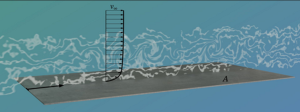
Inhaling asbestos fibres represents one of the most dangerous exposures for human health. The fibres, thin and resistant, can penetrate deeply into the lungs and deposit in the tissues, where they remain trapped for decades, causing chronic inflammation and permanent cellular damage. Over time, this exposure can lead to the development of serious and irreversible diseases such as pleural mesothelioma — a rare and aggressive tumour of the membrane that lines the lungs — lung carcinoma, and asbestosis, a progressive fibrosis that reduces respiratory capacity.
Asbestos is classified by the International Agency for Research on Cancer (IARC) as a confirmed human carcinogen (Group 1), and even low concentrations, if exposure is prolonged, entail a measurable risk. The fibres do not degrade either in the human body or in the environment, and can be released not only from damaged buildings or manufactured products, but also from the natural or mechanical erosion of roofing and materials containing asbestos.
For this reason, the ability to estimate the atmospheric dispersion of such fibres is increasingly required in Health Impact Assessments, especially when analysing scenarios with potential diffuse sources or materials in a degraded state, in order to assess the potential exposure of the population and to plan effective prevention measures.
ARIANET has developed an emission model specifically dedicated to the wind erosion of asbestos-cement roofing exposed to atmospheric agents.
The physical principle underlying this model is clear: the wind, through its turbulent kinetic component, transfers energy to the surfaces of the sheets, which can trigger the detachment and release of fibres into the air.
The emission depends mainly on the following factors:
• the intensity and turbulence of the wind in the atmospheric layer close to the ground;
• the degree of erosion and degradation of the sheets, which influences the ease of fibre release;
• the surface area of sheets exposed to erosion;
• the wind emission factor, that is, how many fibres are emitted for each unit of energy transferred.
It is precisely on this last parameter that the scientific literature is scarce and uncertain: only a few experimental studies have quantified the actual release of fibres under atmospheric conditions. For this reason, an accurate calibration of the emission model is essential, based wherever possible on measurements of airborne asbestos fibre concentrations near known roofing sites, under different wind and degradation conditions.
Once the emission model has been defined, it becomes possible to simulate the atmospheric dispersion of fibres on a local or regional scale, estimating ambient-air concentrations and thereby supporting health assessments and risk-management strategies.
For these simulations to be reliable, it is crucial to have an accurate and georeferenced mapping of asbestos-cement roofing, with up-to-date information on their state of conservation: without a solid data foundation, even the most advanced models lose significance.
This approach provides health and environmental authorities with a robust tool for assessing the potential exposure of the population, planning targeted remediation interventions, and reducing the risk associated with a contaminant that, even today, remains a silent but concrete threat.
